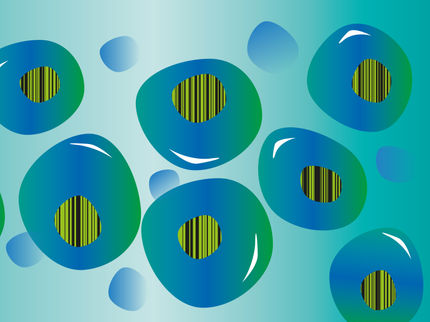New stem cell therapy in dogs -- a breakthrough in veterinary medicine
New method to generate canine stem cells means that regenerative therapies can soon benefit our beloved companions
Advertisement
dogs have been faithful human companions ever since their domestication thousands of years ago. With various improvements in veterinary medicine in the past decades, their life expectancy has increased. However, an unfortunate side effect of this longevity, much like in humans, has been an increase in the occurrence of chronic and degenerative conditions.

A team of scientists in Japan has developed a novel method to induce stem cell generation from the blood samples of dogs. Through this technique, the scientists hope to advance regenerative therapies in veterinary medicine. This would mean that, in the near future, veterinarians might be able to reverse conditions in dogs that were previously thought incurable.
Shingo Hatoya, Osaka Prefecture University
In humans, modern efforts to fight such diseases have culminated in the development of regenerative therapies, largely based on stem cells. These "baby" cells have the potential to differentiate and mature into many specialized cell types-- called "pluripotency." By transplanting stem cells and guiding their differentiation into desired cell types, researchers are effectively able to regenerate damaged tissues, thereby reversing the course various complex diseases. Although this technology is widely studied in humans, the potential for stem cell therapy in dogs is lacking.
To this end, a research team from Japan, led by Associate Professor Shingo Hatoya from Osaka Prefecture University, has been working on isolating "induced pluripotent stem cells" (iPSCs) from canine blood samples. iPSCs are a type of stem cell that can be "programmed" from a developed (or "differentiated") cell by introducing a specific set of genes into them. These genes code for proteins called "transcription factors," which induce the change from a differentiated to a pluripotent stem cell, which then have the ability to mature into various cell types. iPSCs can proliferate very rapidly, providing a reliable supply of suitable stem cells for regenerative therapies. "We successfully established an efficient and easy generation method of canine iPSCs from peripheral blood mononuclear cells" explains Dr. Hatoya. He highlights the significance of these findings for veterinary science, stating he hopes that in the near future, "it may be possible to perform regenerative medicinal treatments in dogs." These findings were published in the journal Stem Cells and Development.
The previous attempts by these scientists to generate iPSCs from canine blood cells, using viral "vectors" to deliver the pluripotency-inducing transcription factors, were not as effective as hoped. Therefore, in this study, they tested a different combination of inducing factors, which they believe were key to harvesting the full potential of these cells. Most importantly, the researchers needed to control how the reprogrammed cells replicated in the host body. Viral vectors that encode pluripotency-inducing transcription factors can be used to infect cells obtained from the blood and convert them into iPSCs; however, the researchers needed to be cautious: because these vectors integrate into the host genome, re-expression of these pluripotency factors in the host cell can cause tumor formation when these cells are transplanted in patients. To avoid this, the team developed "footprint-free" stem cells by using a particular type of viral vector that can generate iPSCs without genomic insertion and can be automatically "silenced" via "microRNAs" expressed by the cells. Then, they grew these cells in a special type of medium that contained various factors enhancing their pluripotency (including a "small-molecule cocktail"). Indeed, these cells grew and successfully developed germ layers (which form the basis of all organs).
Fascinatingly, these findings have paved the way for an easy stem cell therapy technique for man's best friends. "We believe that our method can facilitate the research involving disease modeling and regenerative therapies in the veterinary field," says Dr. Hatoya. Furthermore, the authors also believe that additional research into regenerative therapies for canines might have some ripple effects for human medicine. "Dogs share the same environment as humans and spontaneously develop the same diseases, particularly genetic diseases."
Translating findings from one field to another might mean veterinarians are able to find treatments, maybe even cures, for some of the diseases that still plague humanity.


























































